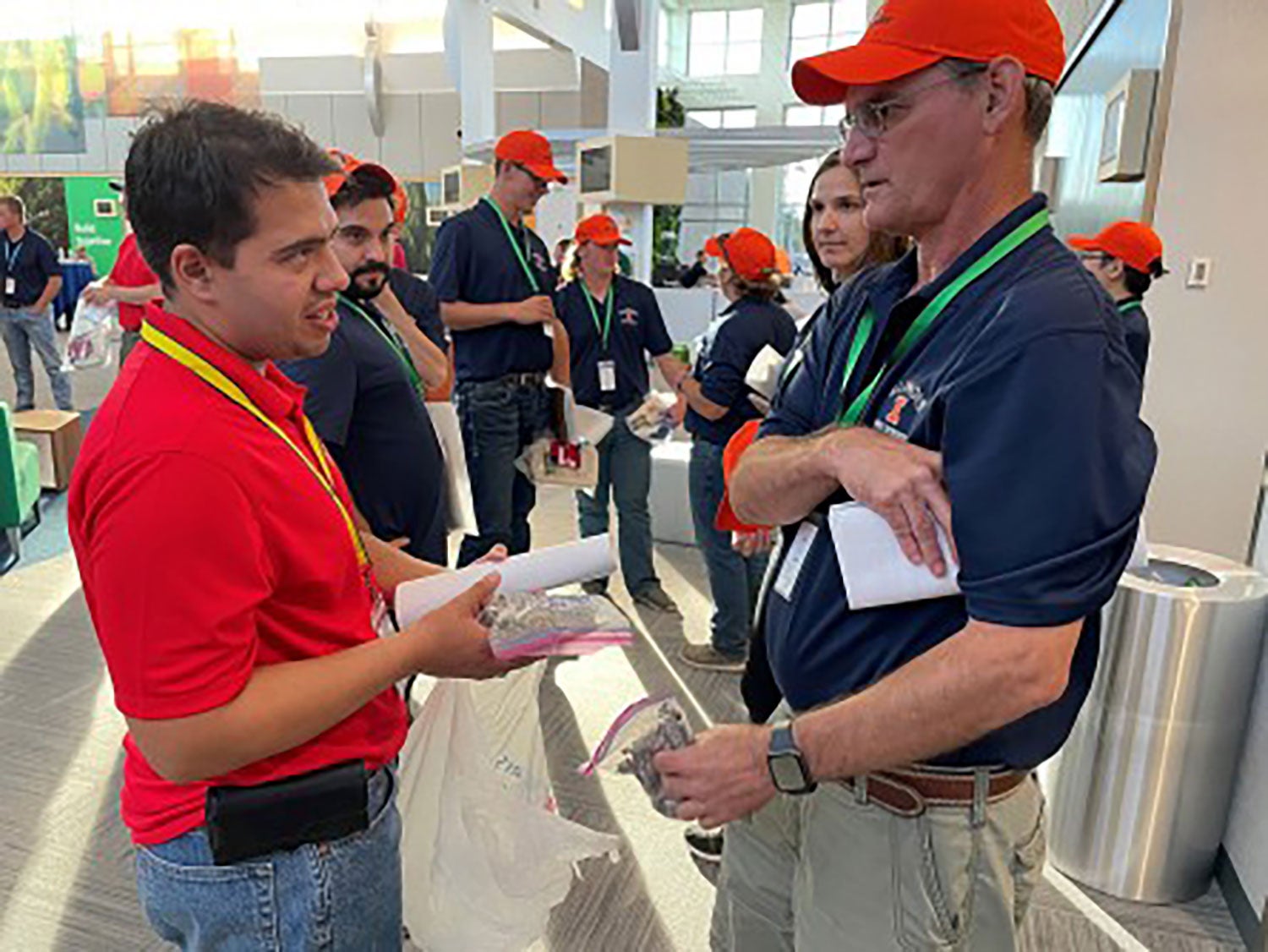A study from the University of Illinois Urbana-Champaign and the University of Wisconsin-Madison has identified the first cases of multiple-herbicide-resistant giant ragweed in Wisconsin and the first ever incidence of Group 14 resistance in this type of weed.
There are few tools available to thwart this particular menace, especially for farmers growing non-GMO soybeans, and there is concern that these new findings mean that farmers are left with even fewer options. Group 14 is a crucial class of post-emergence herbicides known as protoporphyrinogen oxidase (PPO) inhibitors — “Losing PPOs means you’re basically out of chemical options,” said study co-author Pat Tranel, a professor in the agriculture college at Illinois.
The results of the study — titled, Resistance to protoporphyrinogen oxidase inhibitors in giant ragweed and published in Pest Management Science — won’t surprise some Wisconsin farmers. Study co-author Rodrigo Werle, associate professor and Extension weed scientist at UW-Madison, says farmers started mentioning in 2018 that PPOs weren’t working as well.
“We thought they had issues with application timing, that they were missing the ideal window for application,” Werle said. “But the growers we were working with are very knowledgeable and did everything by the book. Small plants were regrowing after being sprayed, which can be a sign of resistance.”
The research team asked farmers to collect and send seeds from plants in affected fields.
“We evaluated fomesafen (a PPO inhibitor) at 1x and 3x the label rate, and a lot of plants survived. Then we evaluated the dose response for fomesafen and lactofen (another PPO). We determined one population had almost 30-fold resistance to fomesafen and almost four-fold resistance to lactofen,” said lead study author Felipe Faleco, a doctoral student at UW-Madison.

Faleco let plants that survived the 1x rate of fomesafen grow to maturity, then collected seeds and handed them off to Tranel, who had previously determined the molecular basis of ALS and PPO resistance in common ragweed, a close relative of the giant variety.
“We sequenced the genes for the PPO target enzyme and found the same mutation that we’d seen in common ragweed,” Tranel said. “There were really no other mutations, so that is likely the basis of resistance in giant ragweed, too.”
Tranel’s group went farther, developing a molecular tool diagnostic labs can use to detect PPO resistance, offering farmers quick answers.
The Wisconsin team also tested for resistance to acetolactate synthase (ALS) inhibitors and glyphosate, finding four populations with resistance to ALS and two populations with resistance to glyphosate. These types of resistance had already been documented in giant ragweed, but the team also found one population with resistance to both.
“For us in Wisconsin, this is the first time we’ve documented two types of resistance in a single population in giant ragweed,” Werle said. “It shows that it’s not only waterhemp that is evolving multiple resistance. We also have some other weeds we have to keep an eye on.”
Resistance to glyphosate affects GMO soybean growers, who turn to PPO and ALS herbicides in those cases. Similarly, non-GMO growers who can’t use glyphosate rely on these chemistries. The authors say with ALS and PPO resistance — essentially, zero chemical options — more non-GMO growers may switch to GMO soybeans.


